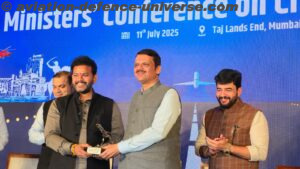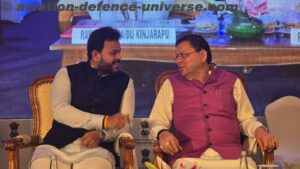New Delhi. 01 July 2016. As the indigenously developed light combat aircraft Tejas was formally inducted into the Indian Air Force (IAF) today, it was a proud moment for the CSIR-National Aerospace Laboratories (CSIR-NAL) which had designed, developed and certified the fly-by-wire flight control laws and algorithms for Tejas. The CSIR-NAL, based in Bengaluru, also developed and fabricated the composite structures for the LCA Tejas, using innovative technology to keep the weight low while retaining the strength.
It goes to the credit of the CSIR-NAL that the flight test program for Tejas has today successfully completed a total of over 2400 flights, carried out on 14 different prototypes by 17 test pilots over a continuously expanding flight envelope meeting the IOC 2 requirements in full.
The National Control Law (CLAW) team had implemented the autopilot modes, simulation and modeling, including wake encounter simulation and advanced parameter identification techniques for flight validation/update of the aerodynamic database leading to safe flight envelope expansion for LCA air force variants. Another notable contribution by the CSIR-NAL has been the development of aircraft 6-degree-of-freedom simulation technology, which is a key requirement for Control Law development.
The CSIR-NAL team also piloted real-time assessments in simulator. CLAW team has developed and fine- tuned the simulation models for LCA-Tejas.Engineer-in-loop Simulator (ELS) is a friendly real-time simulator and a single window projection based facility developed at CSIR-NAL.
The composite wing development for Tejas was also undertaken by the CSIR-NAL, which has pioneered the development and fabrication of composite structures for the fighter, using innovative and cost-effective fabrication technologies including co-curing and co-bonding construction.
The technology developed at CSIR-NAL not only reduces the cost but also improves the structural efficiency of the aircraft by minimizing the number of mechanical joints. With this innovation, composite aircraft structures have become cost effective and structurally far superior to conventional aircraft structures. It may be noted that Tejas airframe is 45 per cent composites (mostly carbon-epoxy) by weight contributing to its reputation as the world’s smallest light weight fighter aircraft. Composites offer a very attractive option in modern aircraft development because they are lighter than metal and just as strong.
The National Trisonic Aerodynamic facility of CSIR-NAL also houses a 1.2 m trisonic wind tunnel and every Indian aerospace vehicle has graduated out of this wind tunnel, which has completed more than 40,000 blowdowns over the past 50 years. Extensive six-component aerodynamic force and moment data needed for Control-Law development of LCA Tejas were generated in the 1.2 m trisonic wind tunnel which led to freezing of the aerodynamic design of the LCA, including sizing of wing and control surfaces.
The success of CSIR-NAL technologies in this indigenous LCA is another unique contribution of CSIR towards Make in India program of the Government of India.
























































































































